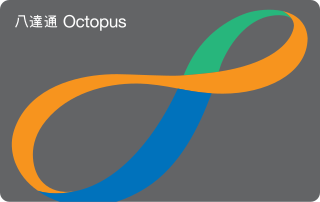
The Octopus card is a reusable contactless stored value smart card for making electronic payments in online or offline systems in Hong Kong. Launched in September 1997 to collect fares for the territory's mass transit system, it has grown into a widely used system for transport and other retail transactions in Hong Kong. It is also used for purposes such as recording school attendance and permitting building access. The cards are used by 98 percent of the population of Hong Kong aged 15 to 64 and the system handles more than 15 million transactions, worth over HK$220 million, every day.
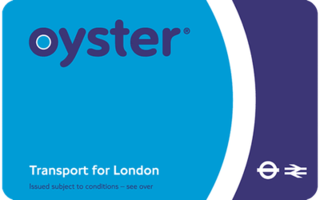
The Oyster card is a payment method for public transport in London in England, United Kingdom. A standard Oyster card is a blue credit-card-sized stored-value contactless smart card. It is promoted by Transport for London (TfL) and can be used on travel modes across London including London Buses, London Underground, the Docklands Light Railway (DLR), London Overground, Tramlink, some river boat services, and most National Rail services within the London fare zones. Since its introduction in June 2003, more than 86 million cards have been used.

SmarTrip is a contactless stored-value smart card payment system managed by the Washington Metropolitan Area Transit Authority (WMATA). The Maryland Transit Administration (MTA) uses a compatible payment system called CharmCard. A reciprocity agreement between the MTA and WMATA allows either card to be used for travel on any of the participating transit systems in the Baltimore-Washington metropolitan area. Unlike traditional paper farecards or bus passes, SmarTrip/CharmCard is designed to be permanent and reloadable; the term "SmarTrip" may refer to both payment systems unless otherwise noted.
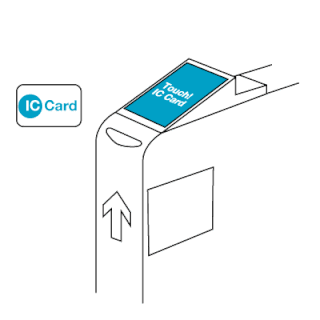
The EZ-Link card is a rechargeable contactless smart card and electronic money system that is primarily used as a payment method for public transport such as bus and rail lines in Singapore. A standard EZ-Link card is a credit-card-sized stored-value contact-less smart-card that comes in a variety of colours, as well as limited edition designs. It is sold by TransitLink Pte Ltd, a subsidiary of the Land Transport Authority (LTA), and can be used on travel modes across Singapore, including the Mass Rapid Transit (MRT), the Light Rail Transit (LRT), public buses which are operated by SBS Transit, SMRT Buses, Tower Transit Singapore and Go-Ahead Singapore, as well as the Sentosa Express.

The EasyCard is a contactless smartcard system operated by the EasyCard Corporation, which was previously named the "Taipei Smart Card Corporation", for payment on the Taipei Metro, buses, and other public transport services in Taipei since June 2002, and its usage has since expanded to multiple kinds of businesses. Its use has also since been expanded to include convenience stores, department stores, supermarkets, taxis, and other retailers since 1 April 2010. Like conventional electronic fare systems, the card employs RFID technology to operate without physical contact. They are available for purchase at all Metro stations and all chain convenience stores.
SmartRider is the contactless electronic ticketing system of the Public Transport Authority of Western Australia. The system uses RFID smartcard technology to process public transport fares across public bus, train and ferry services.

Fares to use the Toronto Transit Commission (TTC) transit system in Toronto, Ontario, Canada, can be paid with various media. The price of fares varies according to age, occupation, and income level of riders.

The Presto card is a contactless smart card automated fare collection system used on participating public transit systems in the province of Ontario, Canada, specifically in Greater Toronto, Hamilton, and Ottawa. Presto card readers were implemented on a trial basis from 25 June 2007 to 30 September 2008. Full implementation began in November 2009 and it was rolled out across rapid transit stations, railway stations, bus stops and terminals, and transit vehicles on eleven different transit systems.
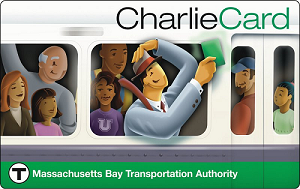
The CharlieCard is a contactless smart card used for fare payment for transportation in the Boston area. It is the primary payment method for the Massachusetts Bay Transportation Authority (MBTA) and several regional public transport systems in the U.S. state of Massachusetts.

Because the rail operators are government-assisted profit-based corporations, fares and ticketing on Singapore's Mass Rapid Transit (MRT) system are currently aimed at least in breaking even to at least compensate for their costs of running the system. The rail operators collect fares by selling electronic tickets capable of storing data, the price of which is calculated based on the distance between the start and destination stations. These prices increase in fixed stages for standard non-concessionary travel. From the information that was earlier written in these tickets, it is possible to increase the fare according to increments based on approximate distances between stations.
The London Underground metro system of London, England uses a mix of paper and electronic smart-card ticketing.

Myki, stylised as myki, is a reloadable credit card-sized contactless smart card ticketing system used for electronic payment of fares on most public transport services in Melbourne and regional Victoria, Australia. Myki replaced the Metcard ticketing system and became fully operational at the end of 2012.

The Ljubljana Passenger Transport, also known by the acronym LPP, is a public transport company embedded in the company Public Holding Ljubljana. It primarily provides urban public bus transport in the city of Ljubljana and also in the city's surroundings through its Intercity Passenger Transport department. In addition, the company also offers chartered bus service, service and repair of commercial vehicles and parts, technical inspection of vehicles, and vehicle registration.

The OV-chipkaart is a contactless smart card system used for all public transport in the Netherlands. First introduced in the Rotterdam Metro in April 2005, it has subsequently been rolled out to other areas and travel modes. It fully replaced the national strippenkaart system for buses, trams, and metro trains in 2011, and the paper ticket system for rail travel in July 2014.
The go card is an electronic smartcard ticketing system developed by Cubic Corporation, which is currently used on the TransLink public transport network in South East Queensland. To use the go card, users hold the card less than 10 cm away from the reader to "touch on" before starting a journey, and must do the same to "touch off" the service at the end of the journey. The cost of each journey is deducted from the go card balance.

The Nol Card is an electronic ticketing card that was released for all modes of public transport in Dubai services, in August 2009. The word Nol is an Arabic word نول for fare. The Nol Card system was developed by Hong Kong-based company Octopus Cards Limited.

Metrocard is a contactless smartcard ticketing system for public transport services in the Adelaide city and suburbs in South Australia. The system is managed by Adelaide Metro and is usable on their bus, train and tram services.

The Troika card is a contactless reusable card designed to pay for public transport in Moscow. It is the centrepiece of the new ticketing menu introduced in Moscow on April 2, 2013.
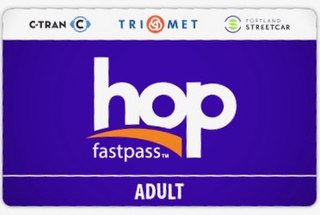
Hop Fastpass is a contactless smart card for public transit fare payment on most transit modes in the Portland, Oregon, metropolitan area including MAX Light Rail, WES commuter rail, Portland Streetcar, The Vine, and all TriMet and C-TRAN buses. An initial release to the general public began on July 5, 2017, with the official launch on July 17. The program is managed by TriMet.
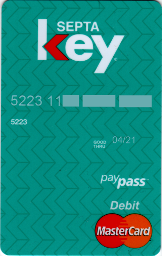
The SEPTA Key card is a smart card that is used for automated fare collection on the SEPTA public transportation network in the Philadelphia metropolitan area. It can be used throughout SEPTA's transit system, and on Regional Rail.

















